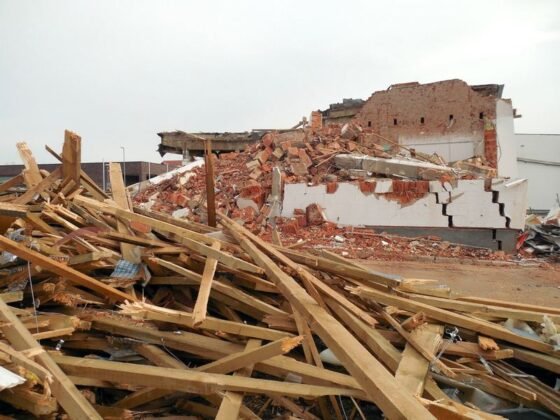If you are in an area that is prone to bushfires, you’ll want to protect your property as best you can. One way to do that is to be mindful of your landscaping in order to help prevent the spread of flames.
Trees can be hazards in extremely dry conditions, and their placement can help a fire spread quickly. That’s why it’s important to assess their placement and potentially prune them back, or seek out other safety measures to protect your family and your home in dry conditions.

Read Also:
How to Check Your Home for Potential Fire Hazards
Trees can create potential fire hazards around the home in ways you may not see right away. Take a look at your property and perform a hazardous tree assessment. Be sure to check:
- The roof. Remove overhanging branches that could transfer fire and remove leaves from your eaves. Don’t forget to prune branches that are less than 3 metres from a chimney and consider installing a spark arrestor mesh.
- Clear vegetation at least 10 metres from windows. Consider installing double-glazed windows and/or roller shutters made from non-flammable material.
- Balconies, decks, and patios. Be sure to build/replace the area with non-flammable materials and enclose eaves and undersides of overhangs with 12 mm non-flammable sheeting.
By creating a buffer zone between your house and vegetation, you can ensure that brush fires will be kept at bay. Conversely, if a fire starts in your home, it won’t spread to the outer foliage and get out of hand.
If you are unsure if your trees could potentially pose a hazard in a fire situation, reach out to a professional to get them assessed.
What to Do If You Notice Fire Hazardous Trees Overhanging Your Home
Tall trees and their branches can provide welcome shade and a picturesque canopy for your garden, but branches overhanging your house can be very dangerous.
It’s a good idea to keep any trees near your home pruned and safe, especially during summer when dry conditions can make overhanging tree limbs a bushfire safety concern. Keep any trees close to your home well-trimmed, and at least two metres from walls, roofs or guttering.
It’s also a good idea to keep any lower branches up to two metres from the ground, to avoid grass fires from spreading up the tree. If you do have branches close to your home, it’s time to consider some tree lopping, tree cutting, or even tree removal.
It’s also advisable to plant trees singularly, and not in clumps, and try to select less-flammable trees. When planting new trees, allow for growth, and maintain the tree so it doesn’t become a safety hazard.
Make sure you prune out any dead limbs or leaves. An arborist can advise you on the best trees to plant in your garden, and how to keep your garden, and your home, safe from fire hazards.
Landscaping Your Garden to Avoid Fire Hazards
Landscaping your garden with fires in mind can help you choose vegetation that can significantly reduce the effects of bushfire on your home.
When designing your garden, consider:
- How you can create defendable space
- Removing flammable objects from around the home
- Breaking up continuity by keeping plants separate, preventing the fire from jumping and spreading
- Carefully locating and pruning trees
Be sure to keep plants and trees away from your house and other structures that can easily catch fire and ignite the buildings. Keeping space helps reduce the spread of fire.
Although all plants will burn under certain conditions, some plants offer low flammability and placing them correctly will help reduce the risk of bushfire in your garden.
A landscape professional or arborist can help you choose the appropriate plants and ideal placement on your property in order to protect the area from accelerating flames during a bushfire.









